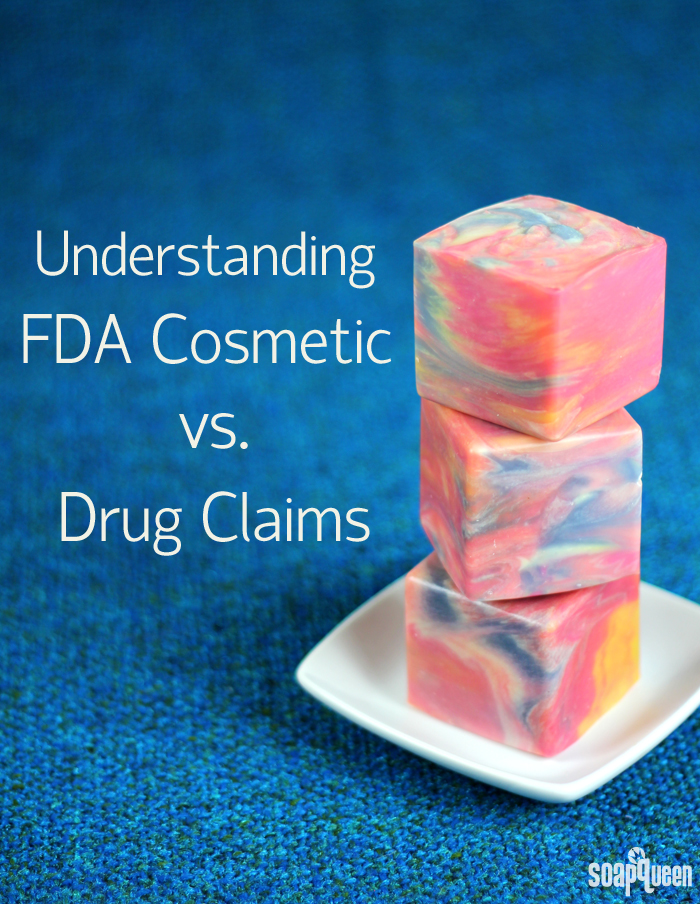To sell soap and cosmetics, understanding the rules of making claims about your products is key. These rules and regulations, created by the FDA (Food and Drug Administration), are put in place for the safety of consumers. Soap and cosmetics should not make claims that could confuse the product with a drug. The FDA regulates and defines cosmetics, drugs and soap differently. It can be a little tricky to understand these definitions and what type of claims are appropriate for cosmetics, drugs and soap.
 It’s important to first understand the difference between a cosmetic and a drug, as defined by the FDA. According to the FDA website, the law defines a cosmetic as:
It’s important to first understand the difference between a cosmetic and a drug, as defined by the FDA. According to the FDA website, the law defines a cosmetic as:
“The Federal Food, Drug, and Cosmetic Act (FD&C Act) defines cosmetics by their intended use, as “articles intended to be rubbed, poured, sprinkled, or sprayed on, introduced into, or otherwise applied to the human body…for cleansing, beautifying, promoting attractiveness, or altering the appearance” [FD&C Act, sec. 201(i)]. Among the products included in this definition are skin moisturizers, perfumes, lipsticks, fingernail polishes, eye and facial makeup preparations, cleansing shampoos, permanent waves, hair colors, and deodorants, as well as any substance intended for use as a component of a cosmetic product.”
In contrast, the law defines a drug as:
“The FD&C Act defines drugs, in part, by their intended use, as “articles intended for use in the diagnosis, cure, mitigation, treatment, or prevention of disease” and “articles (other than food) intended to affect the structure or any function of the body of man or other animals” [FD&C Act, sec. 201(g)(1)].”
To summarize this statement, a cosmetic is a product that is used to beautify, or alter the appearance. A drug is a product intended to diagnose, treat or prevent a disease. A product is also considered a drug when it is intended to affect the function of the body.